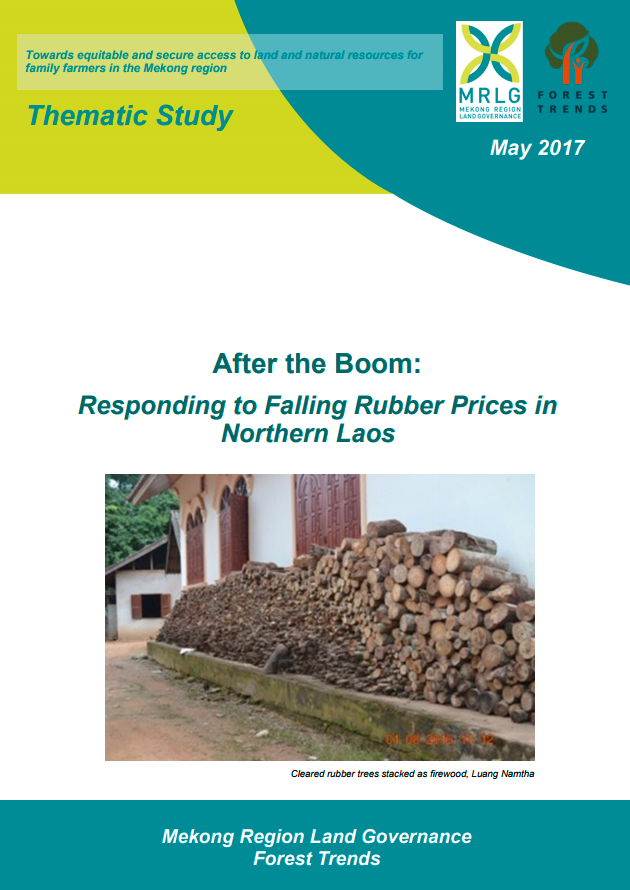Cómo los bosques pueden reducir la pobreza
El Departamento de Montes de la Organización de las Naciones Unidas para la Agricultura y la Alimentación (FAO), con el apoyo del Departmento para el Desarrollo Internacional (DFID) del Reino Unido, celebraron en septiembre de 2001, un Foro interinstitucional sobre el papel que desempeña el sector forestal en el alivio de la pobreza. Analistas de los países en desarrollo, representantes de las agencias multilaterales y bilaterales, organizaciones de investigación internacional y Organizaciones no gubernamentales (ONG), se reunieron para compartir sus experiencias.
Understanding changing land access and use by the rural poor in Ghana
In Ghana 70 per cent of the population are smallholder farmers who depend on the land for their basic needs. Growing competition for this resource is having significant impacts on rural livelihoods and governance as land changes hands. This study highlights the key drivers of pressure on rural land and their communities, such as population growth, urbanisation and acquisition of land by new actors, including government and business.
Soil and Water Conservation Strategies in Cape Verde (Cabo Verde in Portuguese) and Their Impacts on Livelihoods: An Overview from the Ribeira Seca Watershed
Severe land degradation has strongly affected both people’s livelihood and the environment in Cape Verde (Cabo Verde in Portuguese), a natural resource poor country. Despite the enormous investment in soil and water conservation measures (SWC or SLM), which are visible throughout the landscape, and the recognition of their benefits, their biophysical and socioeconomic impacts have been poorly assessed and scientifically documented.
Poverty and Environmental Degradation in Southern Burkina Faso: An Assessment Based on Participatory Methods
The poverty and environmental degradation vicious circle hypothesis considers the poor as agents and victims of environmentally degrading activities. Despite some studies, however, there still has not been a sufficient empirical examination of the poverty-environment nexus.
Changing Livelihoods and Landscapes in the Rural Eastern Cape, South Africa: Past Influences and Future Trajectories
This paper seeks to understand the drivers and pathways of local livelihood change and the prospects for transformation towards a more sustainable future. Data are used from several studies, and a participatory social learning process, which formed part of a larger project in two sites in the Eastern Cape, South Africa. Secondary information from a wealth of related work is used to place our results within the historic context and more general trends in the country. Findings indicate that livelihoods in the rural Eastern Cape are on new trajectories.
A indispensável terra africana para o aumento da riqueza dos pobres
Este artigo junta-se aos esforços de muitos outros africanos, entendendo-se por pobreza não só os níveis de rendimento por dia por pessoa, mas também a pobreza como ausência de poder nas relações intra-familiares, entre estas e os demais actores e entre a sociedade no seu todo e os recursos naturais de que se dispõe no Continente Africano.
Harnessing Proposed Land Reforms to Promote Environmental Conservation in Kenya: Lessons from The Case of Mwaluganje Elephant Sanctuary and Hombe Community Forest Association
Land plays a vital and central role in the economic, social-cultural and political lives of both individuals and communities. Given its centrality in the socio-economic and political spheres, national goals such as economic development, poverty reduction, social and political stability are closely linked to land. Land provides the livelihood base for the bulk of the population especially in the rural areas where agriculture is the main occupation. Despite their importance, land and environment in Kenya have suffered decades of mismanagement that has led to the current state of degradation.
After the Boom: Responding to Falling Rubber Prices in Northern Laos
Rubber prices in northern Laos have fallen significantly over the last few years, eroding much of the initial enthusiasm of both farmers and government officials about rubber providing a way out of poverty for poor upland farmers. This thematic study examines responses to this price drop by Lao rubber growers and state institutions in northern Laos. It also examines the reasons that prices are what they are, given that price volatility was identified as a risk during the mid-2000s, and that in at least some cases, steps were taken to protect contract farmers from falling prices.
Allocation or appropriation? How spatial and temporal fragmentation of land allocation policies facilitates land grabbing in Northern Laos
The Lao Land and Forest Allocation Policy (LFAP) was intended to provide clearer property rights for swidden farmers living in mountainous areas. These lands are legally defined as “State” forests but are under various forms of customary tenure. The policy involves demarcating village territorial boundaries, ecological zoning of lands within village territories, and finally allocating a limited number of individual land parcels to specific households for farming.
A tale of two villages: An investigation of conservation-driven land tenure reform in a Cambodian Protection Forest
In this paper, we present an analysis of the change in household land use following a conservation-driven process of indigenous land titling reform in a Cambodian protected area. In each of the two study villages, we investigated how household land use had changed and the extent of compliance with both legal boundaries of titled areas and community regulations created to govern land use within these areas. A comparison of current household land holdings in each village with those at the start of the tenure reform process indicated a significant increase in household land holdings.
Towards a Spatial Understanding of Trade-Offs in Sustainable Development: A Meso-Scale Analysis of the Nexus between Land Use, Poverty, and Environment in the Lao PDR
In land systems, equitably managing trade-offs between planetary boundaries and human development needs represents a grand challenge in sustainability oriented initiatives. Informing such initiatives requires knowledge about the nexus between land use, poverty, and environment. This paper presents results from Lao PDR, where we combined nationwide spatial data on land use types and the environmental state of landscapes with village-level poverty indicators. Our analysis reveals two general but contrasting trends.






